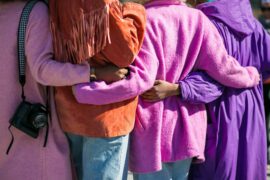In the crusade against child sex trafficking, the paramount concern is safeguarding our children and our youth from exploitation and sexual abuse. We have looked into the grim realities faced by young individuals ensnared in the sex trade, debunking misconceptions propagated by proponents of sex work.
By examining the harrowing experiences of victims and the inherent vulnerabilities of youth, this series aims to shed light on the urgency of combatting child sex trafficking and safeguarding the rights and dignity of our most vulnerable population.
The Sex Trade
One misconception must be debunked—children and youth enter the sex trade willingly, exercising agency and autonomy over their bodies. Contrary to such fallacious assertions, the reality is far grimmer and more insidious. Many individuals coerced or manipulated into prostitution have endured unspeakable trauma, including childhood sexual abuse. This may also be violent childhood sexual abuse, which lays the foundation for their subsequent exploitation.
The research underscores the pervasive nature of this phenomenon. Studies reveal a staggering percentage of individuals involved in prostitution have a history of childhood sexual trauma (Farley et al., 2004). These vulnerable youths are robbed of their innocence and agency. They are systematically preyed upon by traffickers and exploiters, ensnaring them in a vicious cycle of exploitation and victimization.
From Childhood to Adulthood
The transition from childhood to adulthood is not a definitive boundary that absolves individuals of the abuses they endured as minors. The arbitrary delineation of turning 18 fails to acknowledge the enduring impact of childhood trauma and exploitation. Victims continue to grapple with the repercussions long into adulthood. It is imperative to recognize the vulnerabilities and traumas inflicted during their formative years persist beyond adolescence. This requires comprehensive support and intervention measures to address their complex needs.
Sexual Abuse of the Most Vulnerable
Critics of anti-child sex trafficking efforts often espouse arguments rooted in the purported agency and autonomy of sex workers. This dismisses the inherent vulnerabilities and coercion faced by individuals ensnared in the sex trade. Such assertions ring hollow in the face of overwhelming evidence highlighting the systemic exploitation and abuse endemic to the industry. Viewpoints of sex workers, valid in their own right, cannot supersede the protection of vulnerable children from exploitation and abuse.
The rights and safety of our most vulnerable must take precedence over ideological debates, underscoring the moral imperative of anti-child sex trafficking efforts.
In Part 3, we will delve deeper into the multifaceted strategies employed in anti-child sex trafficking efforts. We will examine the complexities of intervention and prevention measures aimed at safeguarding the rights and dignity of vulnerable youth.
References
Dissertation: https://www.proquest.com/docview/2795205907/.
Farley, M., Cotton, A., Lynne, J., Zumbeck, S., Spiwak, F., Reyes, M. E., & Alvarez, D. (2004). Prostitution and trafficking in nine countries: An update on violence and posttraumatic stress disorder. Journal of Trauma Practice, 2(3-4), 33-74.
Article #1 in this series – Sex Work / Prostitution
Article #3 in this series – Anti-Child Sex Trafficking Efforts
Unapologetically for the children™


